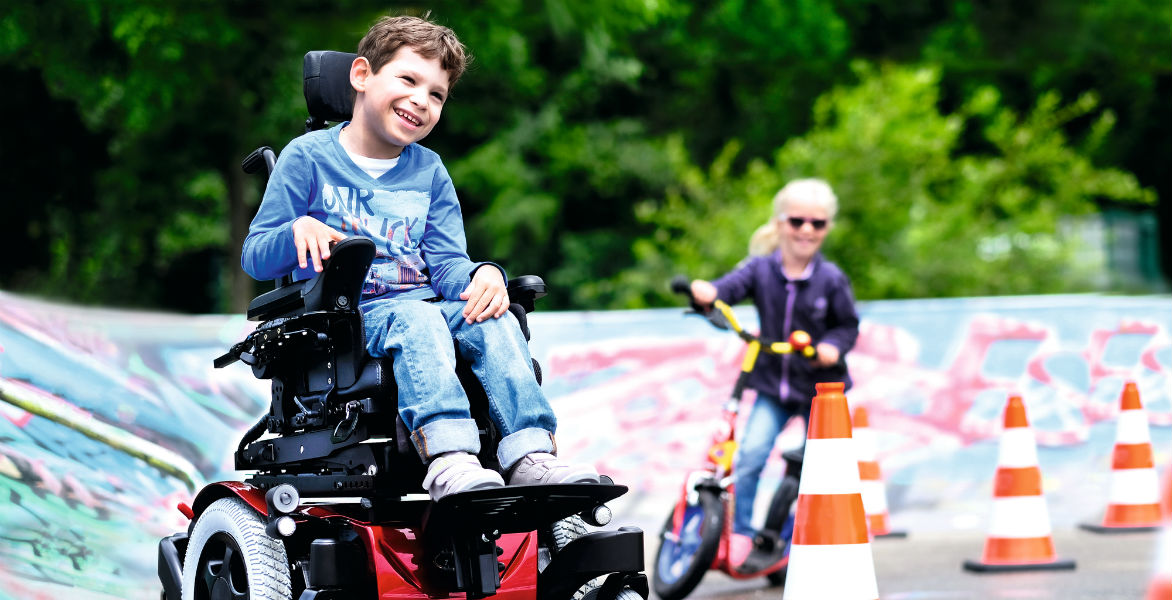Partagé:
Take it offline!
This Education in Motion resource is also available as a printable PDF.
Téléchargez PDF
Often, when we evaluate a powered mobility device (PMD) for a child with disabilities, as well as motor issues we must also consider cognitive issues. Many clinicians ask themselves how to get around these issues, and often ask certain questions:
Can children with cognitive impairments access these mobility technologies? Are there tools that can help clinicians in the evaluation of powered mobility devices? What are the tricks you can use to personalise the power wheelchair (PWC) and improve safety?
This position paper aims to answer these questions via a systematic review of the scientific literature, and accompanying discussion of the results.
Abstract
Objectives: to summarize and examine studies about power mobility assessment for individuals with cognitive and motor impairments exploring strategies and measures.
Method: A search of the literature including articles published from 1999 to 2015 was conducted using one electronic database. Studies involving individuals with cognitive impairments and the need of PMD (Powered Mobility Devices) assessment; key terms included power(ed) mobility, power(ed) wheelchair, and database-specific terms. Three reviewers independently screened titles, abstracts, and full-text articles. Inclusion criteria: Studies that included a description of strategy assessment or measure of power mobility skills for users with cognitive and motor impairments.
Results: Of 1111 titles, 7 articles met inclusion criteria. Some cognitive functions seem predictive variables or more related to powered mobility skill. Several studies refer to powered mobility skill measures even for individuals with cognitive impairments to organize an appropriate PMD training.
Conclusions: There is not a minimum score (at neuropsychological tests) to exclude anyone from the use of PMD before an appropriate training by AT professionals, at all ages.
Keywords: POWERED MOBILITY DEVICE, POWERED MOBILITY, POWERED WHEELCHAIR, SYSTEMATIC REVIEW, TRAINING, ASSESSMENT, COGNITIVE IMPAIRMENT, COGNITIVE FUNCTIONS, PSYCHOLOGICAL TEST

Background
Mobility is a foundational skill for participation in the roles and activities of daily life [1]. The identification of a powered mobility device (PMD; e.g., powered wheelchairs, electric scooter, balancing wheelchair) is a complex process, which requires validated strategies. However, in the Italian context, this process is rarely supported by validated instruments: in many instances it depends exclusively on the expertise of the single operator/service or refers to the technicians [2,3,4,5]. One of the main barriers to the introduction of validated measures in clinical settings is the possibility to include them in well-consolidated practices. Increasingly, professionals in the field of rehabilitation are requested to employ validated tools in each phase of the service delivery process [6], from the identification and selection of the device to the evaluation of the outcomes of the intervention, in particular when the PMD assessment is for a person with motor and cognitive impairments.
We think appropriate to reconsider these issues and devote time and resources to the assessment process because the number of people with disabilities who use wheelchairs is constantly growing and wheelchair has become a gradually more accepted solution [2,6,7]. Furthermore, users that are often not satisfied with their mobility aids and its services [8, 9] also remind us that to provide an adequate service is essential having a process centered on resources, activities and desires of the person with disability [10].
To pursue the best "matching" between the person and the PMD it is essential to consider several factors related both to the person with disabilities and to their context: among personal factors certainly an important role have the cognitive aspects that often put the clinicians decisively in crisis [10, 11].
The purpose of this systematic review was to summarize and examine studies about power mobility assessment for individuals with cognitive and motor impairments exploring strategies and measures.